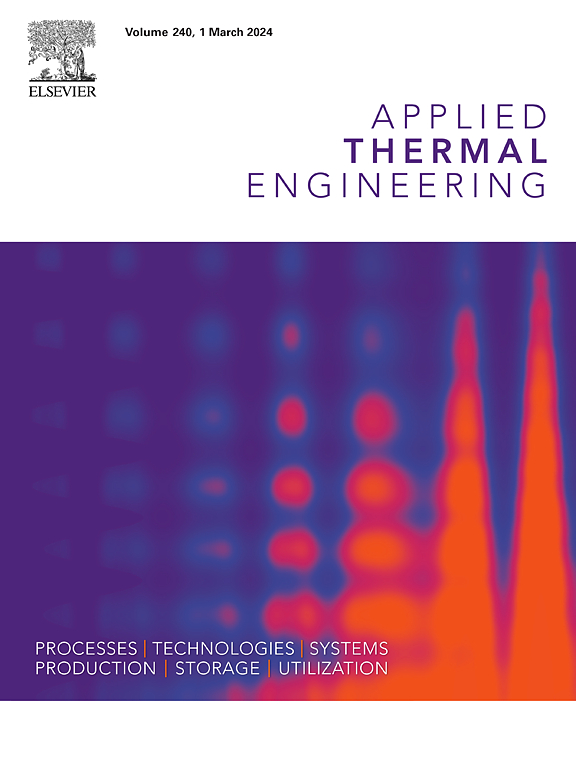Dynamic analysis of air-based photovoltaic–thermal system with fins and rectangular obstacles
IF 6.1
2区 工程技术
Q2 ENERGY & FUELS
引用次数: 0
Abstract
Air-based Photovoltaic–Thermal (PVT) systems convert solar energy into heated air and electricity. However, their thermal efficiency is relatively low due to the poor thermal conductivity of air. In this study, the daily and annual performance of a novel air-based PVT system with Fins and Rectangular Obstacles (PVTFRO) was evaluated and compared with that of a PVT system featuring Smooth Fins (PVTSF). A dynamic model of the PVTFRO was developed using the finite-volume method and validated based on experimental data. Numerical results show that the PVTFRO achieved 18.74% and 1.22% higher total thermal and electrical outputs, respectively, than the PVTSF during daily operation. The annual total thermal and electrical outputs of the PVTFRO were also 21.23% and 0.72% higher than those of the PVTSF. Additionally, the net electrical output, which considers fan power consumption, was higher for the PVTFRO than for the PVTSF during both daily and annual operations. Therefore, incorporating rectangular obstacles into a smooth finned air channel enhances the performance of an air-based PVT system, despite the resulting increase in fan power consumption.
求助全文
约1分钟内获得全文
求助全文
来源期刊

Applied Thermal Engineering
工程技术-工程:机械
CiteScore
11.30
自引率
15.60%
发文量
1474
审稿时长
57 days
期刊介绍:
Applied Thermal Engineering disseminates novel research related to the design, development and demonstration of components, devices, equipment, technologies and systems involving thermal processes for the production, storage, utilization and conservation of energy, with a focus on engineering application.
The journal publishes high-quality and high-impact Original Research Articles, Review Articles, Short Communications and Letters to the Editor on cutting-edge innovations in research, and recent advances or issues of interest to the thermal engineering community.
 求助内容:
求助内容: 应助结果提醒方式:
应助结果提醒方式:


